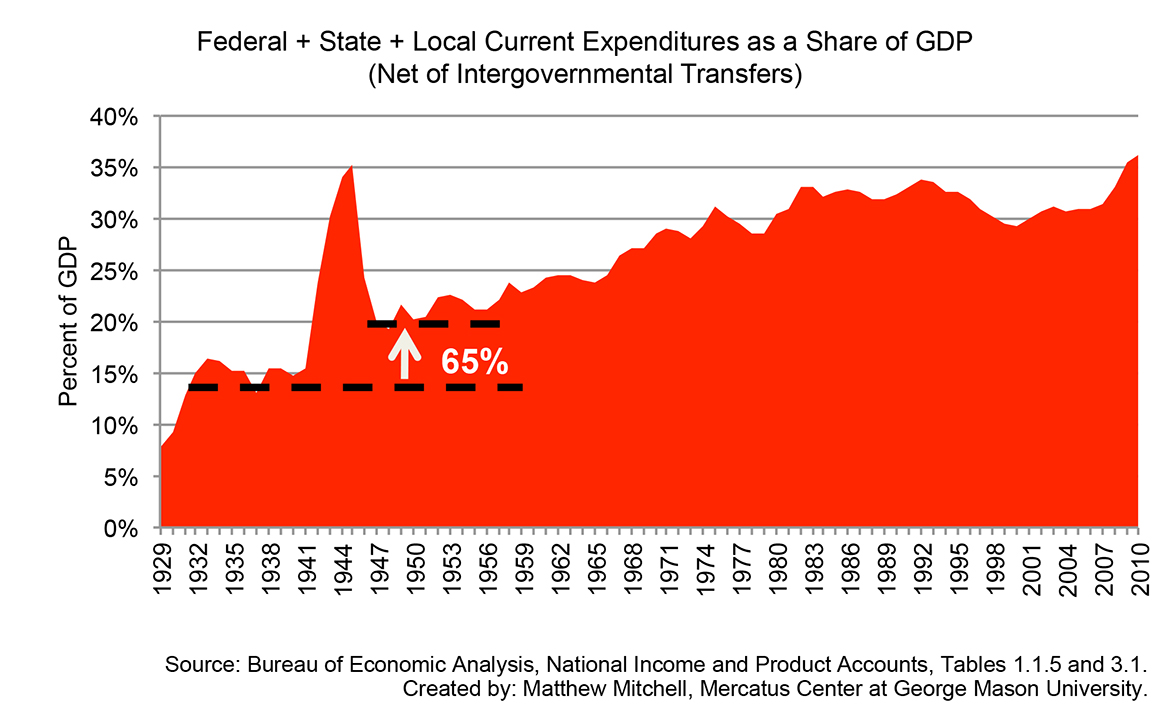- | Government Spending Government Spending
- | Data Visualizations Data Visualizations
- |
Federal, State, and Local Expenditures as a Share of GDP at WWII Levels
This chart illustrates the increase in the size of federal, state, and local expenditures as a share of GDP over the course of the past century.
In this week’s chart, Mercatus Center Research Fellow Matthew Mitchell uses data from the Bureau of Economic Analysis to illustrate the increase in the size of federal, state, and local expenditures as a share of GDP over the course of the past century.
The chart shows how expenditures as a share of GDP spiked during World War II but were reduced rapidly and significantly. However, spending never returned to the pre-war level and has followed a general upward trend ever since.
Today federal, state, and local expenditures as a share of GDP are back at the highs reached during World War II. This time, however, we are unlikely to see a swift decrease. Wartime expenditures on items like weaponry and salaries for conscripted soldiers were relatively easy to wind down. The bulk of current and future government spending is on entitlement programs like Social Security and Medicare. This variety of spending is nearly impossible to reduce in the near term.
The tendency for spending to ratchet up during a crisis is important because it suggests why fiscal stimulus is unlikely to be economically helpful. In an oft-repeated quote, economist and stimulus advocate Lawrence Summers has argued that stimulus ought to be “timely, targeted, and temporary.” Otherwise, it is unlikely to be economically helpful. The fact that spending rarely returns to pre-crisis levels suggests that governments may find it impossible to implement stimulus in the way Keynesians such as Summers would like to see.


